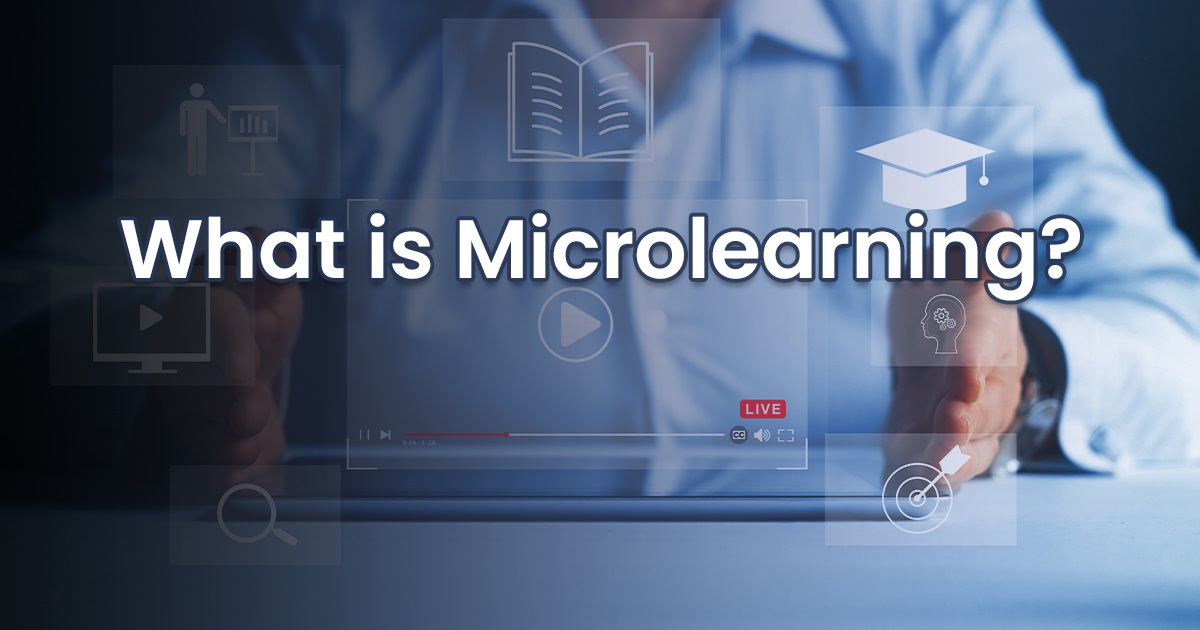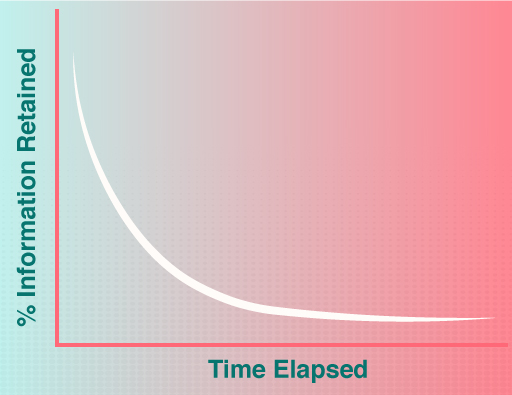
Microlearning is an eLearning method that provides informational content in short, precise bursts. It is usually delivered via digital channels such as smartphones, tablets, or computer applications.
"We are drowning in information but starving for wisdom and knowledge. Education ought to teach us not only how to make a living but also how to live." Shiv Khera —Indian Author
Shiv Khera believed that the purpose of education was to provide an individual with knowledge, wisdom, and the skills necessary to have a meaningful life. With microlearning, it is possible.
Microlearning provides the opportunity to gain knowledge, wisdom, and skills needed for a successful and meaningful life.
Conrad Gottfredson is the father of Microlearning theory and is believed to popularize the vision that learning is more effective when broken down into small, manageable chunks. He suggested that 95% of learning happens outside formal, structured education through informal, on-the-job training and self-directed learning.
Microlearning theory has existed since at least the mid-2000s, though its roots date back to the 19th century. Moreover, microlearning has recently gained popularity due to its effective tool for learning, remembering, and adapting new information.
Hermann Ebbinghaus was the first person to create a scientific approach to learning and classifying memory in the mid-1880s, and he introduced concepts like the learning curve and forgetting curve.
In Ebbingaus' view, people tend to uphold knowledge they have learned in large quantities. However, if the learned data is not considered "crucial" to the tasks, it becomes less useful over time.

As per a recent report by Work Learning, The Ebbinghaus forgetting curve demonstrates that people forget 50-80% of what they've learned after 24hrs and 97-98?ter a month.
As such, Hermann Ebbinghaus concluded that long-term memory is only useful if the information is important and relevant to the situation.
Microlearning, eLearning and traditional learning have a place in modern educational approaches but differ in their respective applications and outcomes. Let us find out.
|
Microlearning |
eLearning |
Traditional Learning |
|
It breaks down learning objectives into smaller pieces that can be learned in short, focused bursts. |
Better flexibility and convenience. |
Traditional learning, on the other hand, involves attending classes and lectures in a physical setting. |
|
This learning mode can apply to either traditional or eLearning, and its key feature is that it is broken into smaller learning bites. |
eLearning mode is helpful for those with time constraints or who cannot attend traditional in-person classes. |
It is in-person learning, where the teacher and the students are present simultaneously. |
|
It is especially useful for learners who need to develop an overall understanding in a relatively short time, as it reduces the cognitive load and makes the learning process more manageable. |
It also typically allows the learner to have more control over the pace and content of the learning, allowing them to focus on the topics they need the most help understanding. |
The traditional learning mode allows students to interact with their instructors and develop relationships with them, which online learning can rarely provide. |
|
For example, microlearning can teach complex concepts by breaking them into small chunks and delivering them over time. |
For example, with eLearning, students can focus on the topics they are struggling with the most rather than having to keep up with the set pace of a traditional classroom. |
Traditional learning also allows for immediate feedback and personalized instruction since the teacher can gauge students' understanding more easily and adjust their instruction accordingly. |
|
As a result, eLearning can be an ideal option for those who prefer to maximise their learning potential and tailor their studies to their individual needs. |
For example, the teacher can interact with students more freely and lead activities which are otherwise difficult to facilitate in a remote setting. |
The rapid advancement in technology is causing modes of education to flourish beyond its borders. Each learning mode has its own set of benefits and challenges. In particular, the Microlearning or eLearning mode of online education has made learning more accessible to students worldwide.
It allows learners to understand lessons and modules at their speed and on their terms while still being able to interact with teachers and peers. However, it also raises challenges, such as the risk of content fragmentation and the inability to access physical resources easily.
Microlearning has several advantages, including saving time, increasing knowledge retention, and improving engagement.
Some major un-explored benefits are:
The most significant benefit of microlearning is that it requires less time to consume and understand, allowing learners to quickly access information and understand the material.
For instance, learners can watch a three-minute video and get the key points they need to remember in a much shorter time than it would take to read through a long article.
Watching videos is a more engaging experience than reading as they use multiple senses. Visuals, audio, and motion make remembering and recalling the key points presented in the video easier, leading to better memory retention.
Watching short and interactive videos is like taking a multi-sensory journey, allowing you to explore the world of the content in a much more immersive way than simply reading about it.
Prioritising the learner's experience is essential to ensure a successful educational journey. For instance, a well-designed user interface with easy-to-understand navigation can provide a seamless learning experience and help learners engage in learning.
Microlearning has many other benefits besides the ones mentioned above. It can help learners stay focused and engaged while providing more flexibility in their learning.
The personalised learning experience saves much of their time, which enables flexible learning paths.
Interesting Read: Top Benefits of Online Instructor-Led Training
Microlearning has undeniably improved the training process in the corporate world. However, as with any other training program or instructional technique, it's not entirely intact.
There are also certain drawbacks and potential challenges that learning and development (L&D) leaders and subject-matter experts should be aware of before diving in deeper.
These microlearning challenges include:
It's also critical to consider how the content can be broken down into smaller pieces to make it easier for learners to digest. Finally, the content must be tailored to the learning style and preferences of the target audience.
Microlearning has become a popular teaching technique in many educational settings, with examples ranging from short videos to interactive quizzes. Some of them are listed below:
Microlearning Videos are short, concise videos designed to meet a specific learning outcome. They are gaining popularity as they deliver information quickly, can be tailored to various audiences, and can be watched anytime. These videos also offer a cost-effective way for companies to train their employees. They can be in the form of:
Infographics are graphics that illustrate data, information, or knowledge. They are often symbolic, focusing on essential points and numerical values. Some examples are:
Microlearning applications are interactive tools that allow learners to engage in short, focused learning activities. These activities may range from simple quizzes to interactive simulations to games designed for specific learning objectives. Apps that provide micro-lessons:
Learning can be graded throughout the process. Interactive games could provide more individualized feedback and opportunities to practise and improve. Rewards for participation or a top score may include awards, medals, trophies, scores, or other performance bonuses. Here are a few examples:
You can use social media to practise microblogging and learn from the content you follow. Social platforms can be used to monitor the activity of web communities of practice. Some of the platforms are:
The online education market is projected to reach in 2023 and is expected to grow at a CAGR of 13.08% to reach US$122.30bn by 2027.
As a result, educational institutions must be well-prepared to take advantage of the opportunities afforded by this fast-growing market while addressing the associated challenges. You can utilise our microlearning solutions incorporating short videos and animations, gamification solutions, and social and text-message-based microlearning.
Share